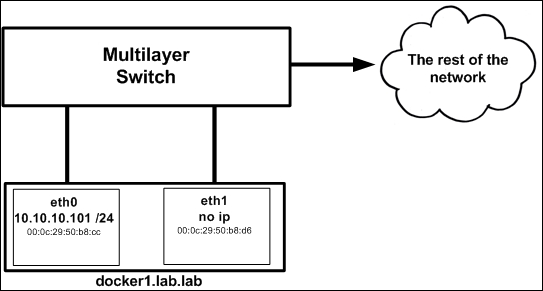One feature that's available with both MacVLAN and IPVLAN Docker network types is the ability to tag containers on a particular VLAN. This is possible since both network types leverage a parent interface. In this recipe, we'll show you how you can create Docker network types that are VLAN tagged or VLAN aware. Since this functionality works the same in the case of either network type, we'll focus on configuring this with MacVLAN type networks.
In this recipe, we'll be a single Docker host to demonstrate how the Linux host can send VLAN tagged frames to upstream network devices. Our lab topology will be as follows:

It is assumed that this host is running version 1.12. The host has two network interfaces, eth0 with an IP address of 10.10.10.101 and eth1 that is up, but has no IP address configured on it.



